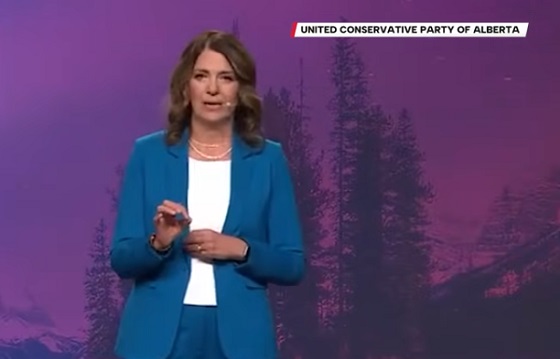National
Free Speech and Inflation top US Voter Concerns; Climate Change a Non-starter according to Polls

News release from the Friends of Science
|
A new poll from FIRE, championed on X by Elon Musk reports that free speech is a critical US voter issue on par with economic issues; climate change is a non-starter, far down the list, says Friends of Science Society. Climate change has lost steam among Canadian voters; a major push-back against the costly carbon tax is happening nation-wide. CALGARY, AB, Oct. 31, 2024 /PRNewswire-PRWeb/ — On Oct. 24, 2024, Elon Musk on “X” wrote: “Major vibe shift” as FIRE, Foundation for Individual Rights and Expression reported their recent poll results with free speech ranked higher than health care, crime and immigration; climate change was second from the last of twelve issues, says Friends of Science Society. The poll was conducted by the prestigious National Opinion Research Center (NORC) at the University of Chicago. Even a September 9, 2024 Pew Research Centre poll of the ‘most important’ voter issues had climate change last on the list of 10. It appears that one of the benefits of Elon Musk’s take-over of Twitter, now “X,” has led to an opening up of the debate on climate change and other topics, to the point where leaked documents show that the Centre for Countering Digital Hate out of the UK specifically targeted him and his platform to be shut down prior to the US election, as reported by the Express Tribune, Oct. 22, 2024. People are now asking “What if CO2 is Good For You?” Climate fearmongers on “X” are met with a barrage of scientific papers and biting memes pushing back, says Friends of Science. On November 11, 2024, just 6 days after the US election, the 29th Conference of the Parties (COP29), countries signatory to the UNFCCC, begins in Baku, Azerbaijan, a petro-state. This year’s focus is on climate finance. S&P Global reports that the target for a climate fund for developing nations is $1 trillion dollars while imposing more stringent Nationally Determined Contribution (NDC) emissions reductions, especially in Europe and other Western industrialized nations where that money is expected to come from. Robert Lyman is a former Canadian federal public servant of 27 years, diplomat of 10 years, and a retired energy economist, predicted in June of 2024 that COP29 will fail, as have all the previous COP conferences. Friends of Science Society issued a report by Robert Lyman titled “Europe on the Brink” which summarizes key points in Prof. Samuel Furfari’s analysis of Mario Draghi’s report on European Competitiveness. Both Europe and Canada seem to be on a climate-policy driven path toward economic destruction, thanks to their commitments to NetZero goals, says Friends of Science Society. Friends of Science Society’s analysis of “Getting to Net Zero” shows that poverty, degrowth and deprivation await citizens. Video explainer here. For most Canadians, the climate change has fallen from public interest with a September 2023 poll showing a 93% concern for economic issues, only a 7% concern for climate change. A more recent poll using different metrics showed 70% of Canadians are focussed on immediate concerns like housing and the cost of living. Provinces are pushing back on the burdensome carbon tax. As reported in the Western Standard of Oct. 30, 2024, David Suzuki and 4 other broadcast colleagues want CBC, the national broadcaster, to make climate emergency a daily news issue. Author Seth Klein proposes a War Measures Act style economy; much like that outlined in the US House Judiciary’s report on the “Climate Cartel” which is reviewing Mark Carney’s “GFANZ.” Friends of Science Society rejects their climate catastrophe activism and rebuts their claims in this video. Canada’s Climate Action Network (CAN-RAC) in “Paving the Way” is pushing for an emissions cap in Alberta, and for COP29 a phase-out of fossil fuels, an increase in foreign spending on climate finance and a tripling of renewables. The manufacturing of renewables requires vast quantities of oil, natural gas and coal, as explained in IEEE Spectrum’s publication of Vaclav Smil’s “To Get Wind Power You Need Oil,” thus these groups are asking the impossible, says Friends of Science Society. Regarding Canada’s proposed emissions cap, Robert Lyman summarizes a Deloitte report in “A Dire Assessment,” showing that “If production is curtailed as Deloitte projects, GDP in Alberta’s oil and gas sector would be $16.2 billion (20%) lower compared to the baseline in 2040. In the rest of Canada, GDP in the sector is projected to be $2.7 billion lower by 2040 compared to the baseline.” |
|
|
About:Friends of Science Society is an independent group of earth, atmospheric and solar scientists, engineers, and citizens who are celebrating its 22nd year of offering climate science insights. After a thorough review of a broad spectrum of literature on climate change, Friends of Science Society has concluded that the sun is the main driver of climate change, not carbon dioxide (CO2). |
Alberta
Carney’s pipeline deal hits a wall in B.C.
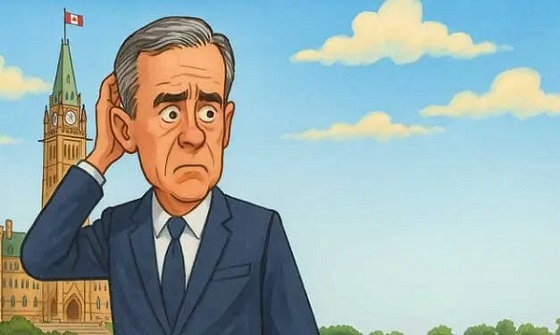
This article supplied by Troy Media.
Carney’s attempt to ease Canada’s dependence on the U.S. stirs a backlash in B.C., raises Indigenous concerns and rattles his own party
The Memorandum of Understanding (MOU) between Prime Minister Mark Carney and Alberta Premier Danielle Smith has opened a political hornet’s nest, exposing deep divisions within the Liberal Party and forcing a national debate that has been avoided for years.
Carney was under mounting pressure to respond to U.S. tariffs that threaten to carve billions out of Canada’s economy. The United States buys more than 95 per cent of Canada’s oil exports, leaving the country highly exposed to U.S. policy decisions. That pressure is now driving his push for a route to the Pacific, a project that could change Canada’s economic future but also destabilize his already fragile minority government.
Carney knows the political risk. His government could fall at any time, which only raises the stakes. Even so, he has pressed ahead. The agreement with Alberta lays early groundwork for a new pipeline to the Pacific. It would expand the oil sands, ease some environmental obligations and revive a proposal industry leaders have pushed for years.
The route is far from settled, but it is expected to run to B.C.’s northern coast and open access to Asian buyers. A Pacific route would finally give Canada a direct path into Asian energy markets, where demand remains strong and prices are often higher than in the United States.
If Carney expected broad support, he did not get it, especially in British Columbia. Because B.C. is the only province with a deep-water port capable of handling large crude carriers, it is the only path a west-coast pipeline can take. The province is now the central battleground, and whether the project succeeds will depend on what happens there.
B.C. Premier David Eby criticized the lack of consultation. “It would have been good for B.C. to be at the table,” he said, warning that the project risks undermining Indigenous support for the province’s liquefied natural gas plans. He also noted that the pipeline has no private backer and no commitments from First Nations, two obstacles that have tripped up projects before.
The backlash quickly spread to Ottawa. Steven Guilbeault, the former environment minister and the most prominent environmentalist ever to serve in a federal cabinet, resigned from cabinet in direct response to the MOU. He said the proposed pipeline “would have major environmental impacts”. Green Party Leader Elizabeth May said his departure “dashes the last hope that Mark Carney is going to have a good climate record ever.”
Several B.C. Liberal MPs echoed concerns about the political cost. CBC News reported anger inside the caucus, with some MPs “seething” over the agreement and worried about losing climate-focused voters.
The voters those MPs fear may not be as opposed as they think. An October Angus Reid Institute survey found that a solid majority of Canadians support a pipeline from northern Alberta to the northwest B.C. coast. In British Columbia, support outweighs opposition by a wide margin. That challenges Eby’s claim that the project lacks public backing. Carney may have more room to manoeuvre than his critics admit.
The most significant challenge, however, comes from Indigenous leaders. British Columbia is the only province that has formally adopted the United Nations Declaration on the Rights of Indigenous Peoples (UNDRIP) into law, giving First Nations a stronger legal position in major project decisions. Court rulings over the past two decades have affirmed a duty to consult and, in some cases, accommodate Indigenous communities, giving them major influence over large projects.
A group representing Coastal First Nations in B.C. said the pipeline “will never happen”. The Union of B.C. Indian Chiefs said it is “loudly objecting” to the MOU, arguing it was drafted without involvement from coastal First Nations and does not meet consultation standards outlined in UNDRIP. “The answer is still no and always will be,” said UBCIC Grand Chief Stewart Phillip. He also said lifting the crude oil tanker ban would amount to bulldozing First Nation rights. Without Indigenous consent, the project cannot proceed, and Carney knows this is the single largest barrier he faces.
Carney’s reasoning is straightforward. The long-term danger of relying on one market outweighs the short-term turbulence created by the pipeline fight. The MOU suggests Ottawa is prepared to reconsider projects once thought politically impossible in order to protect Canada’s economic future. He is betting that doing nothing is the bigger risk.
Whether this pipeline moves forward is uncertain, and the obstacles are real. One fact, however, remains clear. Canada cannot keep betting its stability on a single market.
Toronto-based Rashid Husain Syed is a highly regarded analyst specializing in energy and politics, particularly in the Middle East. In addition to his contributions to local and international newspapers, Rashid frequently lends his expertise as a speaker at global conferences. Organizations such as the Department of Energy in Washington and the International Energy Agency in Paris have sought his insights on global energy matters.
Troy Media empowers Canadian community news outlets by providing independent, insightful analysis and commentary. Our mission is to support local media in helping Canadians stay informed and engaged by delivering reliable content that strengthens community connections and deepens understanding across the country.
Business
Is Carney Falling Into The Same Fiscal Traps As Trudeau?

From the Frontier Centre for Public Policy
By Jay Goldberg
Rosy projections, chronic deficits, and opaque budgeting. If nothing changes, Carney’s credibility could collapse under the same weight.
Carney promised a fresh start. His budget makes it look like we’re still stuck with the same old Trudeau playbook
It turns out the Trudeau government really did look at Canada’s economy through rose-coloured glasses. Is the Carney government falling into the same pattern?
New research from the Frontier Centre for Public Policy shows that federal budgets during the Trudeau years “consistently overestimated [Canada’s] fiscal health” when it came to forecasting the state of the nation’s economy and finances over the long term.
In his research, policy analyst Conrad Eder finds that, when looking specifically at projections of where the economy would be four years out, Trudeau-era budgets tended to have forecast errors of four per cent of nominal GDP, or an average of $94.4 billion.
Because budgets were so much more optimistic about long-term growth, they consistently projected that government revenue would grow at a much faster pace. The Trudeau government then made spending commitments, assuming the money would be there. And when the forecasts did not keep up, deficits simply grew.
As Eder writes, “these dramatic discrepancies illustrate how the Trudeau government’s longer-term projections consistently underestimated the persistence of fiscal challenges and overestimated its ability to improve the budgetary balance.”
Eder concludes that politics came into play and influenced how the Trudeau government framed its forecasts. Rather than focusing on the long-term health of Canada’s finances, the Trudeau government was focused on politics. But presenting overly optimistic forecasts has long-term consequences.
“When official projections consistently deviate from actual outcomes, they obscure the scope of deficits, inhibit effective fiscal planning, and mislead policymakers and the public,” Eder writes.
“This disconnect between projected and actual fiscal outcomes undermines the reliability of long-term planning tools and erodes public confidence in the government’s fiscal management.”
The public’s confidence in the Trudeau government’s fiscal management was so low, in fact, that by the end of 2024 the Liberals were polling in the high teens, behind the NDP.
The key to the Liberal Party’s electoral survival became twofold: the “elbows up” rhetoric in response to the Trump administration’s tariffs, and the choice of a new leader who seemed to have significant credibility and was disconnected from the fiscal blunders of the Trudeau years.
Mark Carney was recruited to run for the Liberal leadership as the antidote to Trudeau. His résumé as governor of the Bank of Canada during the Great Recession and his subsequent years leading the Bank of England seemed to offer Canadians the opposite of the fiscal inexperience of the Trudeau years.
These two factors together helped turn around the Liberals’ fortunes and secured the party a fourth straight mandate in April’s elections.
But now Carney has presented a budget of his own, and it too spills a lot of red ink.
This year’s deficit is projected to be a stunning $78.3 billion, and the federal deficit is expected to stay over $50 billion for at least the next four years.
The fiscal picture presented by Finance Minister François-Philippe Champagne was a bleak one.
What remains to be seen is whether the chronic politicking over long-term forecasts that plagued the Trudeau government will continue to be a feature of the Carney regime.
As bad as the deficit figures look now, one has to wonder, given Eder’s research, whether the state of Canada’s finances is even worse than Champagne’s budget lets on.
As Eder says, years of rose-coloured budgeting undermined public trust and misled both policymakers and voters. The question now is whether this approach to the federal budget continues under Carney at the helm.
Budget 2025 significantly revises the economic growth projections found in the 2024 fall economic statement for both 2025 and 2026. However, the forecasts for 2027, 2028 and 2029 were left largely unchanged.
If Eder is right, and the Liberals are overly optimistic when it comes to four-year forecasts, then the 2025 budget should worry Canadians. Why? Because the Carney government did not change the Trudeau government’s 2029 economic projections by even a fraction of a per cent.
In other words, despite the gloomy fiscal numbers found in Budget 2025, the Carney government may still be wearing the same rose-coloured budgeting glasses as the Trudeau government did, at least when it comes to long-range fiscal planning.
If the Carney government wants to have more credibility than the Trudeau government over the long term, it needs to be more transparent about how long-term economic projections are made and be clear about whether the Finance Department’s approach to forecasting has changed with the government. Otherwise, Carney’s fiscal credibility, despite his résumé, may meet the same fate as Trudeau’s.
Jay Goldberg is a fellow with the Frontier Centre for Public Policy.
-
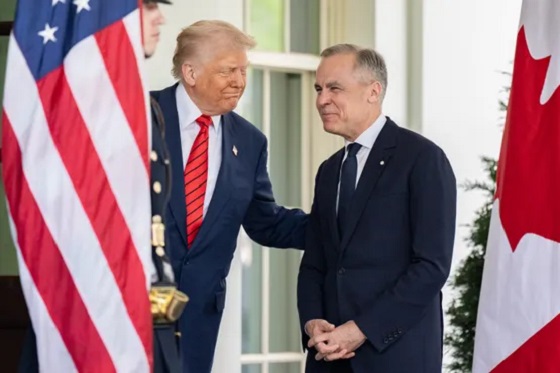
 National1 day ago
National1 day agoCanada Needs an Alternative to Carney’s One Man Show
-

 Alberta15 hours ago
Alberta15 hours agoThis new Canada–Alberta pipeline agreement will cost you more than you think
-
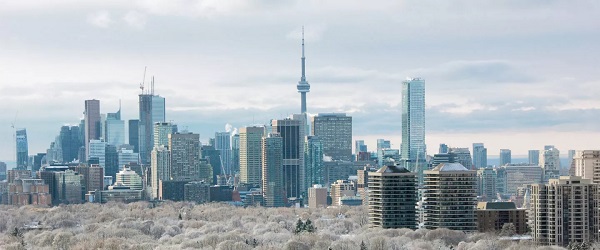
 Business1 day ago
Business1 day agoRecent price declines don’t solve Toronto’s housing affordability crisis
-

 Daily Caller1 day ago
Daily Caller1 day agoTech Mogul Gives $6 Billion To 25 Million Kids To Boost Trump Investment Accounts
-

 Automotive15 hours ago
Automotive15 hours agoPower Struggle: Governments start quietly backing away from EV mandates
-
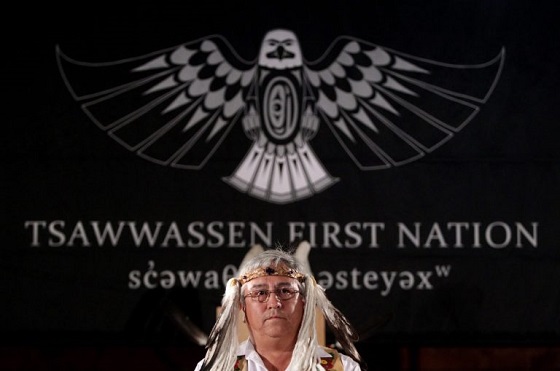
 Energy15 hours ago
Energy15 hours agoUnceded is uncertain
-

 armed forces2 days ago
armed forces2 days agoGlobal Military Industrial Complex Has Never Had It So Good, New Report Finds
-
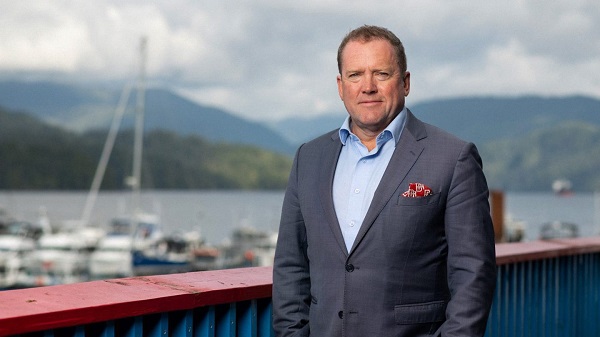
 Business1 day ago
Business1 day agoCanada’s future prosperity runs through the northwest coast



